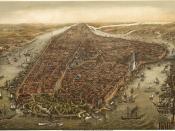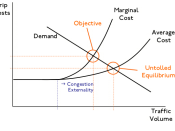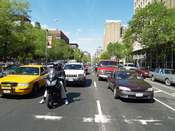Almost anyone who has visited or been a resident of New York City would attest to the fact that traffic is unbearable. Many have said they think of New York traffic the same as they think of the weather, "It's too bad but you can't do much about it." Congestion has real costs for all travelers, including truckers (both long-haul and local delivery/pickup), household and business service providers (such as plumbers, computer technicians, police, and ambulance services), and personal travel (Traffic Congestion & Reliability, 2/20/06). This level of congestion results in significant loss of productivity and added delivery times and costs for businesses, as well as stress and frustration for residents. At this point, it is neither possible nor desired to expand road capacity, requiring consideration of other means to reduce traffic congestion or manage demand for motor vehicle use (Zupan and Perrotta, 5).
How The Plan Would Work
Congestion Pricing has been the focus of a nine-month study during 2005 conducted by The Partnership for New York City.
Under the "congestion pricing plan" several roadways would remain free of charge to travel on, like the West Side Highway and the Franklin D. Roosevelt Drive on the East Side, according to people with knowledge of the study (Chan, B1). The 840,000 cars that enter Manhattan south of 60th Street on an average weekday could be subject to a $7 charge during peak hours. Vehicles starting and ending their trips within that zone might pay a $4 charge (Zupan and Perrotta, 6).
The Regional Plan Association (RPA) has constructed four pricing scenarios for the purpose of understanding how congestion pricing might work, how much traffic it might discourage, how much transit use it might encourage, and how much revenue it might raise. The four scenarios were organized around the fact that...


